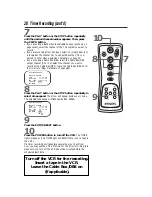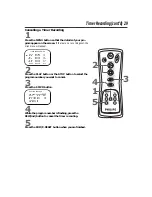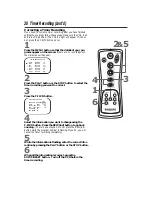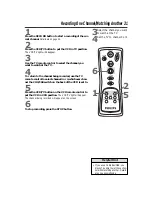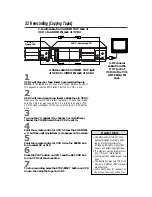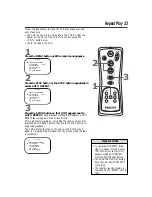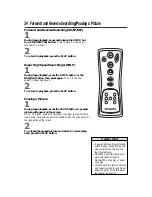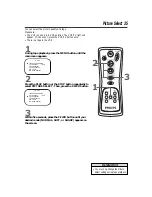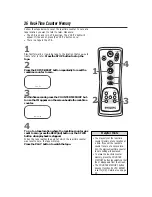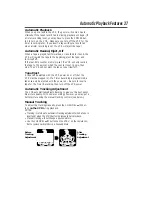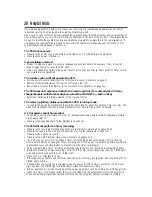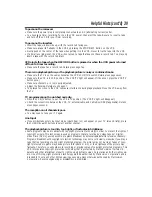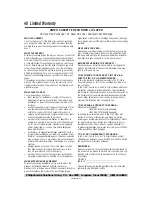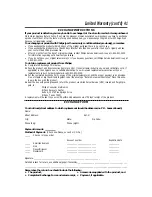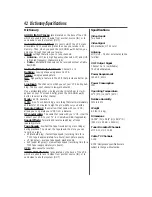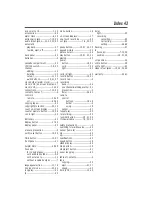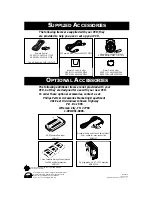
Specifications
Video Heads
Two heads
Video Signal
EIA standards; NTSC color
Antenna
VHF/UHF – 75 ohm external antenna
terminal
VHF Output Signal
Channel 3 or 4 (switchable)
75 ohms unbalanced
Power Requirement
120V AC; 60Hz
Power Consumption
12W
Operating Temperature
41°F (5°C) to 104°F (40°C)
Relative Humidity
10% to 80%
Weight
5.3 lbs. (2.4 kg.)
Dimensions
14-3/16” (W) x 3-5/8” (H) x 8-3/4” (D)
(360 mm x 92mm x 223mm)
Tuner Broadcast Channels
VHF 2-13, UHF 14-69
Cable TV Channels
1-125
NOTE: Designs and specifications are
subject to change without notice.
42 Dictionary/Specifications
Dictionary
AUDIO IN/OUT Jacks: jacks located on the back of the VCR
which are used to record audio from another source (IN) or to
send audio to another system (OUT).
Automatic Channel Setup: process in which the VCR scans
all available TV channels and places the ones you receive in its
memory. Then, when you push the CHANNEL
o
/
p
button, you
only scan through channels you receive.
Bands: settings that allow you to tune channels.
• Antenna – VHF (very high frequency; channels 2-13) and UHF
(ultra high frequency; channels 14-69).
• Cable – all standard channels can be received without a Cable
Box/DBS.
Cable Box/DBS Output Channel: Channel 3 or 4.
Dubbing: copying a tape using a second VCR.
Frame: a single paused picture.
HQ: high quality; a feature in the VCR that provides a better pic-
ture.
Line Input: The channel to which you set your VCR during dub-
bing. The line input channel is always channel 00.
If you accidentally enter Line Input mode (LineIn Rear (L1) will
appear on your TV screen briefly), press the CHANNEL
o
/
p
button to select another channel.
Mode: a VCR operation.
OTR: One-Touch Recording; a recording that starts immediately
and lasts for 30 minutes to eight hours, whichever you decide.
Remote Control: the small unit that came with your VCR;
allows you to operate your VCR from a distance.
RF coaxial cable: The cable that came with your VCR. Use it to
connect your VCR to your TV (or Cable Box/DBS, if applicable).
Special Effects: forward and reverse searching; a frozen
(paused) picture.
Tape Speeds: how fast the tape travels during a recording or
during playback. The slower the tape speed, the more you can
record on a tape.
• SP (standard play) – fastest tape speed (recording time for a
T120 tape is approximately two hours); best picture quality.
• LP (long play) – average tape speed; playback only.
• SLP (super long play) – slowest tape speed (recording time for a
T120 tape is approximately six hours).
VCR: video cassette recorder.
VIDEO IN/OUT Jacks: jacks located on the back of the VCR
which are used to record video from another source (IN) or to
send video to another system (OUT).

